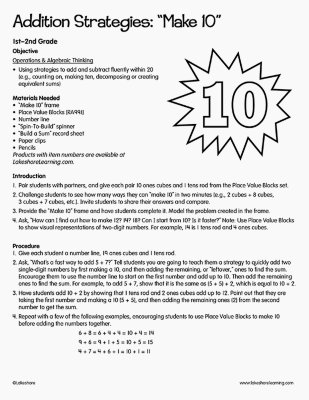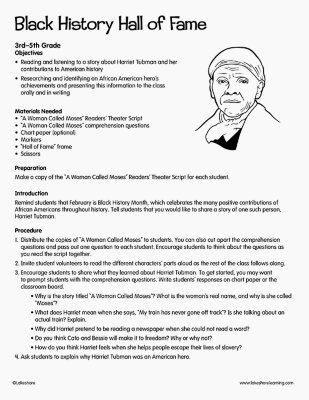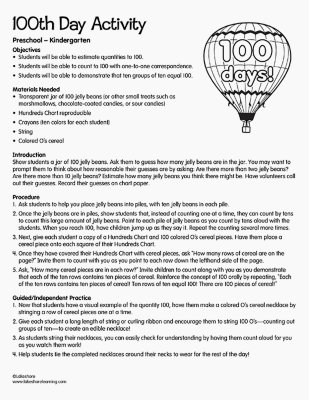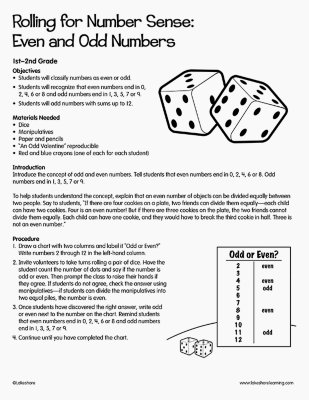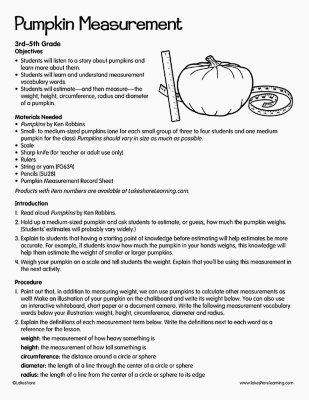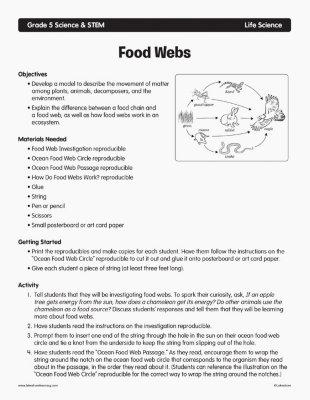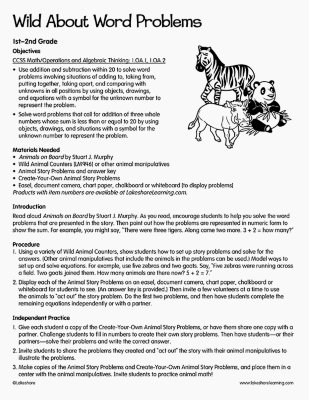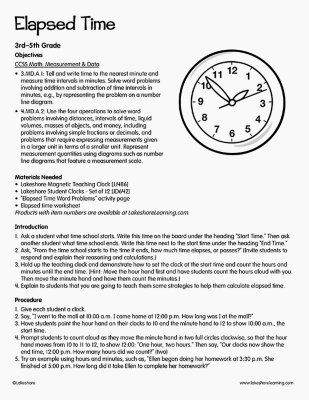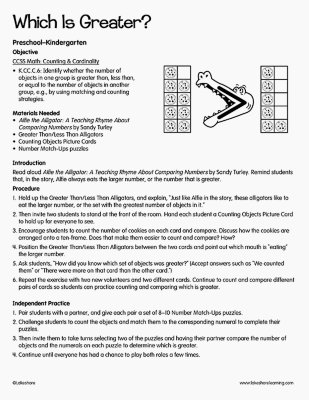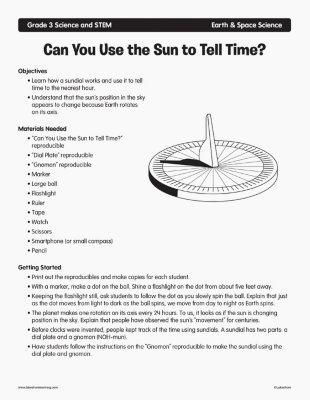Narrow by Grade
Grade
110 results for "teacher desk paper work organizer"
ITEMS:
Amazing Ocean Animals
3rd Grade
Objectives Understanding and explaining how blubber helps sea mammals adapt to cold temperatures in the ocean Identifying the mammals among a variety of ocean animals Materials Needed Ocean Animal Picture Cards Thin rubber gloves (one per student) Vegetable shortening Bowls of cold water Quart-size zip-close bag Pencils and paper Scissors Before You Begin Download, print and cut apart the set of Ocean Animal Picture Cards. Fill the zip-close bag with shortening. Introduction Hold up each ocean animal picture card, asking students to guess which animals are mammals (the whale, dolphin and walrus). Explain that whales, dolphins and walrus are not fish, but mammals that have adapted to live in the ocean. Tell students that mammals are warm-blooded and that their body temperatures must remain constant, even in the cold ocean environment. Explain that one important adaptation of ocean mammals is the blubber, or thick layer of fat, that these animals have beneath their skin.
View Lesson PlanAddition Strategies: "Make 10"
1st Grade - 2nd Grade
Objective Operations & Algebraic Thinking Using strategies to add and subtract fluently within 20 (e.g., counting on, making ten, decomposing or creating equivalent sums) Materials Needed “Make 10” frame Place Value Blocks Number line “Spin-To-Build” spinner “Build a Sum” record sheet Paper clips Pencils Introduction Pair students with partners, and give each pair 10 ones cubes and 1 tens rod from the Place Value Blocks set. Challenge students to see how many ways they can “make 10” in two minutes (e.g., 2 cubes + 8 cubes, 3 cubes + 7 cubes, etc.). Invite students to share their answers and compare. Provide the “Make 10” frame and have students complete it. Model the problem created in the frame. Ask, “How can I find out how to make 12? 14? 18? Can I start from 10? Is it faster?” Note: Use Place Value Blocks to show visual representations of two-digit numbers. For example, 14 is 1 tens rod and 4 ones cubes.
View Lesson PlanClose Reading and Text Features
3rd Grade - 4th Grade
Objectives CCSS Reading: Informational Text RI.3.7: Use information gained from illustrations (e.g., maps, photographs) and the words in a text to demonstrate understanding of the text (e.g., where, when, why, and how key events occur). RI.4.7: Interpret information presented visually, orally, or quantitatively (e.g., in charts, graphs, diagrams, time lines, animations, or interactive elements on Web pages) and explain how the information contributes to an understanding of the text in which it appears. Materials Needed “Three Cheers for Engineers!” reading passage Paper and pencils Introduction Provide students with a copy of the “Three Cheers for Engineers!” reading passage. Tell students, “Today we are going to read a passage titled, “Three Cheers for Engineers!” One practice of good readers is that they pay close attention to the text. As we read, I want you to think about the meaning of the text, the words that are used and other features on the page that are used to help interpret the text.”
View Lesson PlanBlack History Hall of Fame
3rd Grade - 5th Grade
Objectives Reading and listening to a story about Harriet Tubman and her contributions to American history Researching and identifying an African American hero’s achievements and presenting this information to the class orally and in writing Materials Needed “A Woman Called Moses” Readers’ Theater Script “A Woman Called Moses” comprehension questions Chart paper (optional) Markers “Hall of Fame” frame Scissors Preparation Make a copy of the “A Woman Called Moses” Readers’ Theater Script for each student. Introduction Remind students that February is Black History Month, which celebrates the many positive contributions of African Americans throughout history. Tell students that you would like to share a story of one such person, Harriet Tubman.
View Lesson Plan100th Day Activity
Kindergarten
Objectives Students will be able to estimate quantities to 100. Students will be able to count to 100 with one-to-one correspondence. Students will be able to demonstrate that ten groups of ten equal 100. Materials Needed Transparent jar of 100 jelly beans (or other small treats such as marshmallows, chocolate-coated candies, or sour candies) Hundreds Chart Reproducible Crayons (ten colors for each student) String Colored O’s cereal Introduction Show students a jar of 100 jelly beans. Ask them to guess how many jelly beans are in the jar. You may want to prompt them to think about how reasonable their guesses are by asking: Are there more than two jelly beans? Are there more than 10 jelly beans? Estimate how many jelly beans you think there might be. Have volunteers call out their guesses. Record their guesses on chart paper.
View Lesson PlanRolling for Number Sense: Even and Odd Numbers
1st Grade - 2nd Grade
Objectives Students will classify numbers as even or odd. Students will recognize that even numbers end in 0, 2, 4, 6 or 8 and odd numbers end in 1, 3, 5, 7 or 9. Students will add numbers with sums up to 12. Materials Needed Dice Manipulatives Paper and pencils “An Odd Valentine” reproducible Red and blue crayons (one of each for each student) Introduction Introduce the concept of odd and even numbers. Tell students that even numbers end in 0, 2, 4, 6 or 8. Odd numbers end in 1, 3, 5, 7 or 9. To help students understand the concept, explain that an even number of objects can be divided equally between two people. Say to students, “If there are four cookies on a plate, two friends can divide them equally—each child can have two cookies. Four is an even number! But if there are three cookies on the plate, the two friends cannot divide them equally. Each child can have one cookie, and they would have to break the third cookie in half. Three is not an even number.”
View Lesson PlanPumpkin Measurement
3rd Grade
Objectives Students will listen to a story about pumpkins and learn more about them. Students will learn and understand measurement vocabulary words. Students will estimate—and then measure—the weight, height, circumference, radius and diameter of a pumpkin. Materials Needed Pumpkins by Ken Robbins Small- to medium-sized pumpkins (one for each small group of three to four students and one medium pumpkin for the class) Pumpkins should vary in size as much as possible. Scale Sharp knife (for teacher or adult use only) Rulers String or yarn Pencils Pumpkin Measurement Record Sheet Introduction Read aloud Pumpkins by Ken Robbins. Hold up a medium-sized pumpkin and ask students to estimate, or guess, how much the pumpkin weighs. (Students’ estimates will probably vary widely.) Explain to students that having a starting point of knowledge before estimating will help estimates be more accurate. For example, if students know how much the pumpkin in your hands weighs, this knowledge will help them estimate the weight of smaller or larger pumpkins. Weigh your pumpkin on a scale and tell students the weight. Explain that you’ll be using this measurement in the next activity.
View Lesson PlanBundles of Tens: Place Value Lesson
1st Grade - 2nd Grade
Objective CCSS Math/Number and Operations in Base 10/Understand Place Value: 1.NBT.2: Understand that the two digits of a two-digit number represent amounts of tens and ones. Understand the following as special cases: 10 can be thought of as a bundle of ten ones—called a “ten.” The numbers from 11 to 19 are composed of a ten and one, two, three, four, five, six, seven, eight or nine ones. The numbers 10, 20, 30, 40, 50, 60, 70, 80, 90 refer to one, two, three, four, five, six, seven, eight or nine tens (and 0 ones). Materials Needed A Fair Bear Share by Stuart J. Murphy Double-Sided Counters Colored Craft Sticks Craft Sticks (plain) Bundles of 10 recording sheet Place Value Match-Up cards Document camera or chart paper Rubber bands Best-Buy Scissors Introduction Read aloud A Fair Bear Share by Stuart J. Murphy. Pause to point out how the bears count nuts, seeds and berries by putting them in groups of tens with the “extras,” or ones, left over. As you point out the bears’ process, model the way they group nuts, seeds and berries: Use double-sided counters on a document camera or chart to show how the bundling of tens and ones takes place. (For example, on page 13, show how the first cub has 21—two piles of 10 with 1 left over.)
View Lesson PlanFood Webs
5th Grade
Objectives
- Develop a model to describe the movement of matter among plants, animals, decomposers, and the environment.
- Explain the difference between a food chain and a food web, as well as how food webs work in an ecosystem.
Wild About Word Problems
1st Grade - 2nd Grade
Objectives CCSS Math/Operations and Algebraic Thinking: 1.OA.1, 1.OA.2 Use addition and subtraction within 20 to solve word problems involving situations of adding to, taking from, putting together, taking apart, and comparing with unknowns in all positions by using objects, drawings, and equations with a symbol for the unknown number to represent the problem. Solve word problems that call for addition of three whole numbers whose sum is less than or equal to 20 by using objects, drawings, and situations with a symbol for the unknown number to represent the problem. Materials Needed Animals on Board by Stuart J. Murphy Wild Animal Counters or other animal manipulatives Animal Story Problems and answer key Create-Your-Own Animal Story Problems Easel, document camera, chart paper, chalkboard or whiteboard [to display problems] Introduction Read aloud Animals on Board by Stuart J. Murphy. As you read, encourage students to help you solve the word problems that are presented in the story. Then point out how the problems are represented in numeric form to show the sum. For example, you might say, “There were three tigers. Along came two more. 3 + 2 = how many?”
View Lesson PlanElapsed Time
3rd Grade - 4th Grade
Objectives CCSS Math: Measurement & Data 3.MD.A.1: Tell and write time to the nearest minute and measure time intervals in minutes. Solve word problems involving addition and subtraction of time intervals in minutes, e.g., by representing the problem on a number line diagram. 4.MD.A.2: Use the four operations to solve word problems involving distances, intervals of time, liquid volumes, masses of objects, and money, including problems involving simple fractions or decimals, and problems that require expressing measurements given in a larger unit in terms of a smaller unit. Represent measurement quantities using diagrams such as number line diagrams that feature a measurement scale. Materials Needed Lakeshore Magnetic Teaching Clock Lakeshore Student Clocks - Set of 12 “Elapsed Time Word Problems” activity page Elapsed time worksheet Introduction Ask a student what time school starts. Write this time on the board under the heading “Start Time.” Then ask another student what time school ends. Write this time next to the start time under the heading “End Time.” Ask, “From the time school starts to the time it ends, how much time elapses, or passes?” (Invite students to respond and explain their reasoning and calculations.) Hold up the teaching clock and demonstrate how to set the clock at the start time and count the hours and minutes until the end time. (Hint: Move the hour hand first and have students count the hours aloud with you. Then move the minute hand and have them count the minutes.) Explain to students that you are going to teach them some strategies to help them calculate elapsed time.
View Lesson PlanWhich Is Greater?
Kindergarten
Objective CCSS Math: Counting & Cardinality K.CC.C.6: Identify whether the number of objects in one group is greater than, less than, or equal to the number of objects in another group, e.g., by using matching and counting strategies. Materials Needed Alfie the Alligator: A Teaching Rhyme About Comparing Numbers by Sandy Turley Greater Than/Less Than Alligators Counting Objects Picture Cards Number Match-Ups puzzles Introduction Read aloud Alfie the Alligator: A Teaching Rhyme About Comparing Numbers by Sandy Turley. Remind students that, in the story, Alfie always eats the larger number, or the number that is greater.
View Lesson PlanCounting Flowers
Pre-K
Objectives Students will count objects using one-to-one correspondence. Students will write numerals from 1 to 20 as an expression of quantity. Materials Needed Flowers and Showers: A Spring Counting Book by Rebecca Fjelland Davis Vase template Counting Flowers reproducible Flowers template Number cards template Cardstock Scissors Crayons Glue Preparation: Before the lesson, print out and cut apart the number cards template. Then print the flowers template and make four copies of the flowers with stems. Color the flowers and cut them out. Next print the vase template and copy it onto heavy cardstock. Cut along the dotted line at the top of the vase so that you can slide the stems through the slit as you add flowers to the vase. If desired, laminate these for repeated use. Introduction Read Flowers and Showers: A Spring Counting Book by Rebecca Fjelland Davis. Before reading the verse on each page, have students take turns identifying the number that is shown and counting the objects on the page. Then encourage students to listen as you read the verse that relates these objects to spring. Next teach children this simple counting song (to the tune of “Are You Sleeping?”). We love counting, We love counting, One, two, three, Four, five, six! Let’s count all the flowers In the pretty vases. Count with me, Count with me!
View Lesson PlanCan You Use the Sun to Tell Time?
3rd Grade
Objectives
- Learn how a sundial works and use it to tell time to the nearest hour.
- Understand that the sun’s position in the sky appears to change because Earth rotates on its axis.

